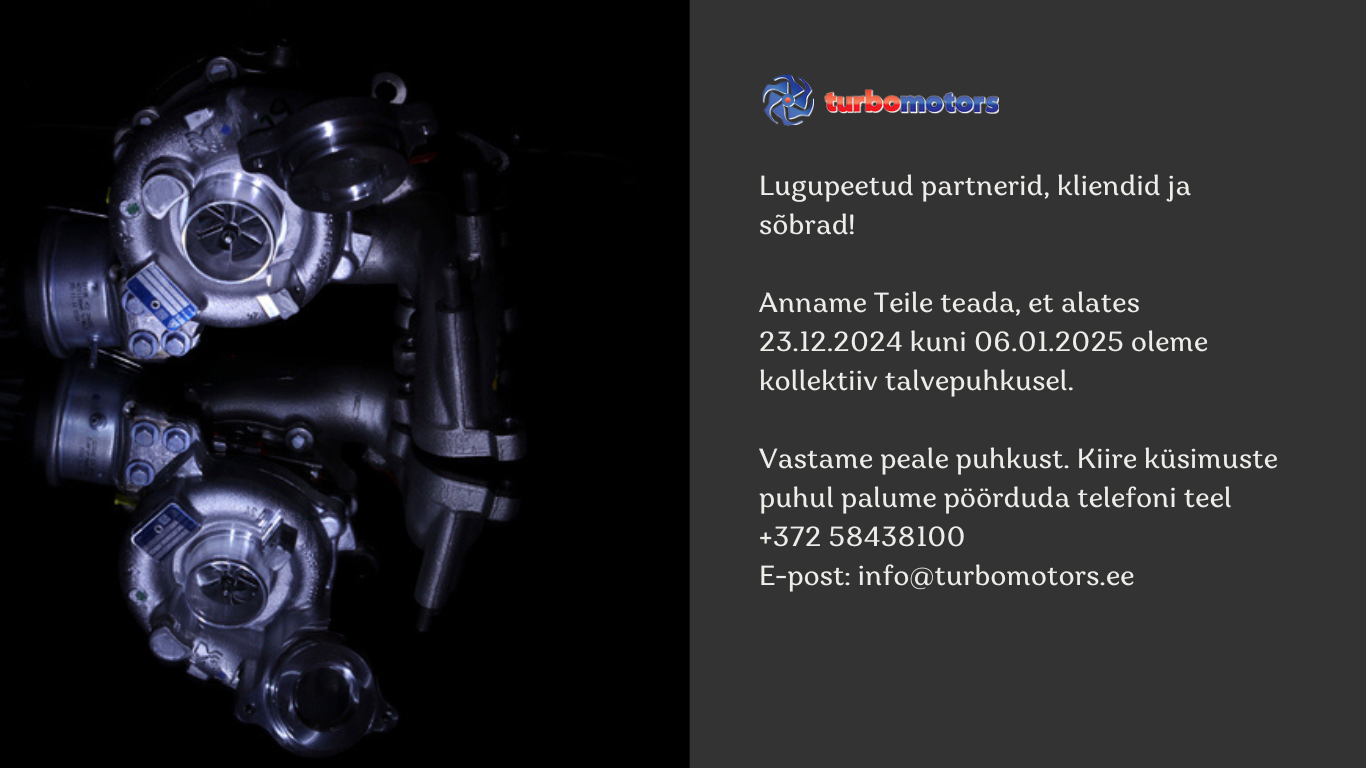It is necessary to carry out the following instructions.
Incorrect mounting may cause crashing of a turbocharger and will make warranty null and void.
GENERAL PROVISIONS: Examine intake system and exhaust system of a turbocharger with aim to check on absence of any foreign articles including particles of gaskets. Keep in mind that small particles may cause serious damage for Shaft and Wheel in case if they penetrate into working zone operating at high revs. Make sure that all dust boots are removed from the turbine. During the mounting at the engine make sure that dirt and foreign objects would not get inside into cavities of turbocharger. Lubricant must be changed and lubricant filter must be replaced before the mounting of new or renovated turbocharger at the engine. We recommend also checking of air filter and replacing it if necessary.
Use only lubricant materials recommended for turbo engines. Use new and certified gaskets for sealing of air system and as an adapter flange between exhaust tubing and turbocharger. IT IS EXPLICITLY FORBIDDEN TO USE SEALING OR CONNECTING COMPOSITIONS (SEALANTS) FOR SEALING OF OIL CHANNELS. Check the oil supply line on absence of damages and narrowing of cross-section, deformations or any other distrustful indications. In case of any mistrust replace the details. At some cases it is necessary to replace tubes (VAG 1.8T) irrespectively from their condition.
1. Mount a turbocharger at the engine. DO NOT USE SEALANTS at inlet opening and exhaust flange of turbine, and also at oil fill and drain pipe. All fastening screws (nuts) of the turbocharger must be tightened using bending moments prescribed in the technical documentation of the engine.
2. Fill the inflow opening of oil channel with clean engine lubricant before connecting of oil supply tube to the turbocharger. Several times turn the fins by hands with aim to lubricate bearings. Repeat this operation until the lubricant will start to flow out from the opening of oil channel.
3. Before connecting of oil drain hose revolve the engine until getting consistent flow of oil from drainage channel thereby preventing oil starvation of turbocharger by starting the engine.
4. Before staring the engine, it is necessary to cut fuel feed and revolve the engine by starter during 20…30 seconds with aim to fill the oil system.
5. Let the engine to work at revs of idle run for at least three minutes after mounting of the turbocharger. This will prevent damage of bearings and will be enough for removal of any residual dirt from oil system and Bearing Housing.
6. Check on absence of leaks of oil and cooling liquid, exhausts and air. Turbocharger – highly precise mechanism made with very close tolerance. It is necessary to follow the programs of service and maintenance recommended by manufacturer with aim to ensure its durability and optimal operation.
7. Simultaneously with repair of turbine it is necessary to replace the catalyst or to remove it. Blocked catalyst will cause crashing of turbocharger.
8. After thorough or regular repair of engine the first oil change after 100 km, the second oil change after 1000 km.
Warning. It is explicitly forbidden to turn the shaft of turbocharger without lubricant. It is forbidden to close the air intake of compressor if the engine is working, it will cause crashing of turbocharger!
DURING OPERATION: It is necessary to comply with following rules during operation: – it is prohibited to cut off engine immediately after it was working under load. It is necessary to allow the engine to work at idle run during 20…120 seconds depending on load;
– it is necessary to avoid of rash acceleration by cold engine;
– it is forbidden to operate an engine without air filter because in such way fins of turbocharger may be damaged.
– it is forbidden to operate an engine with a level of lubricant below minimum. It is necessary regularly (according to requirements of operation of a car) change lubricant and replace lubricant filter (filters) (10 000 KM). Quality of lubricant and lubricant filter must correspond with brand of car and engine. During operation of engine a special attention must be paid to the exhaust system and catalyst. Increased resistance to exhaust fumes causes untimely fall out of the turbocharger.

